Purple Potatoes How to Cook for Beginners
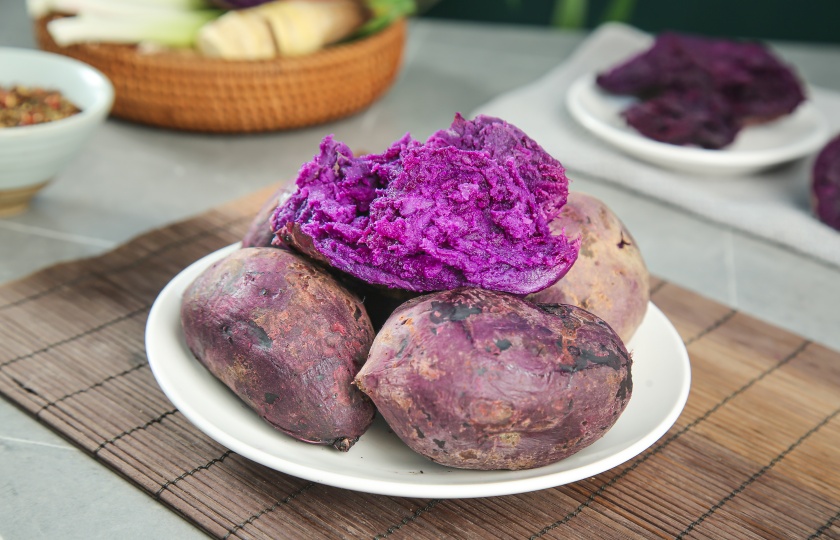
There are many ways to cook purple potatoes. How can you fully highlight their vibrant color and flavor? Let’s explore a few simple and delicious methods.
Step 1: Selecting Purple Potatoes
When choosing purple potatoes, opt for ones with smooth skin, no damage, and no green spots. High-quality purple potatoes should be plump, moderately heavy, and often have some purple specks, indicating freshness.
Step 2: Cleaning and Peeling
The skin of purple potatoes is quite thin, so peeling isn’t always necessary. To retain more nutrients, you can simply clean them thoroughly and use them with the skin on. If peeling is preferred, use a peeler to minimize waste. While cleaning, use a brush to scrub off any dirt on the surface.
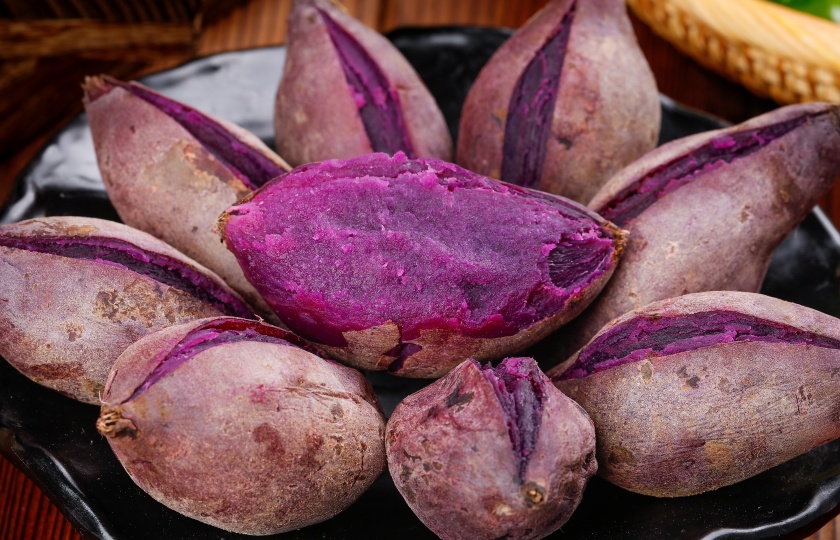
Step 3: Cutting into Chunks or Slices
Depending on your recipe, cut purple potatoes into chunks or thin slices. Chunks are ideal for boiling or steaming, while slices work better for frying or roasting as they heat more evenly. Try to keep the pieces uniform in size to ensure even cooking.
Method 1: Steamed Purple Potatoes
Steaming is the best way to preserve the texture and nutrients of purple potatoes. Place the chunks in a steamer and steam for 20–25 minutes. The steamed potatoes will turn soft and naturally sweet. Sprinkle some salt or pair them with butter for a richer flavor. If mashed potatoes are your goal, steam the potatoes, then mash them with cream, milk, and a pinch of salt for a smooth texture.
Method 2: Boiled Purple Potatoes
Boiling is a classic method. Place the cut purple potatoes in a pot, add enough water, and bring it to a boil. Lower the heat and simmer for about 20 minutes until the potatoes soften. Use them for mashed potatoes or as a side dish. To enhance the flavor, add spices like rosemary or garlic cloves while boiling. For a richer taste, include a pinch of salt during the cooking process.
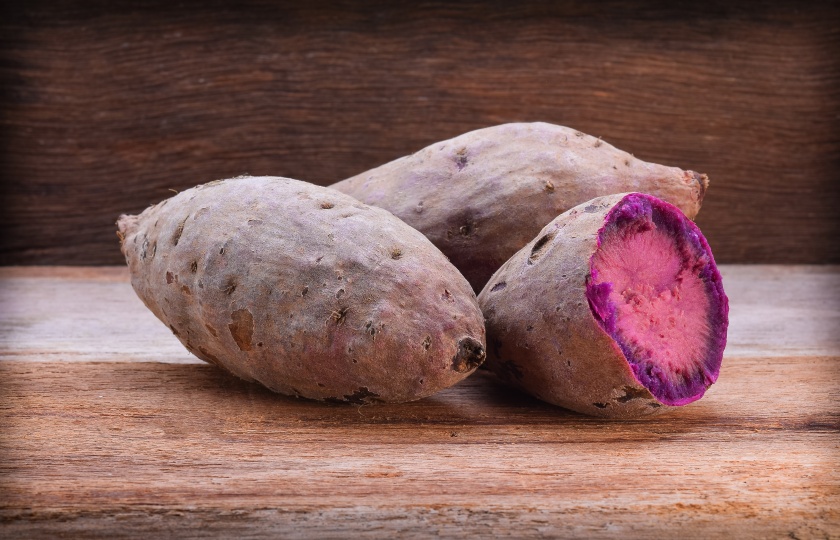
Method 3: Roasted Purple Potatoes
Roasting gives purple potatoes a flavorful twist. Wash and slice the potatoes, toss them with olive oil and salt, then roast in a preheated oven at 180°C (350°F) for 30–40 minutes. The result is crispy on the outside and tender on the inside, perfect as a snack or side dish. Add rosemary, black pepper, or Parmesan cheese for extra depth. For a sweet version, sprinkle cinnamon or drizzle with honey before roasting.
Method 4: Stir-Fried Purple Potatoes
Stir-frying brings out the rich flavors of purple potatoes. Slice them thinly, then fry in hot oil with minced garlic, onion slices, and spices. For a spicy twist, add red chili or chili powder. A dash of soy sauce and sugar while stir-frying creates a caramelized coating, making the dish incredibly appetizing.
Method 5: Purple Potato Salad
For a refreshing salad, boiled purple potatoes are perfect. Cut the cooked potatoes into chunks and mix them with cucumber, onions, pepper, and olive oil. Chill in the fridge for a cold, flavorful salad. Customize the flavor by adding lemon juice, yogurt, or cheese to suit your taste.
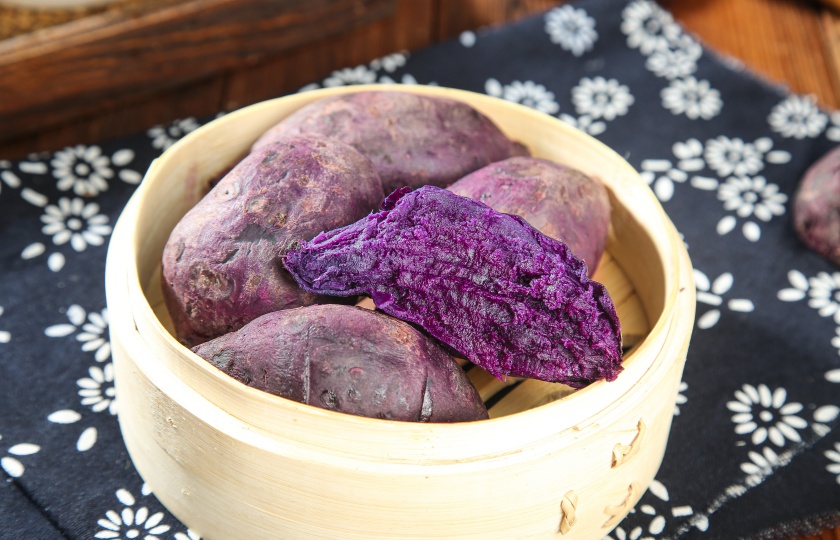
Seasoning Tips
Although purple potatoes have a natural sweetness, seasoning can enhance their flavor. For a savory twist, sprinkle sea salt, black pepper, or garlic powder to elevate the taste. If you prefer something sweet, try drizzling honey, maple syrup, or adding yogurt to create a dessert or a side dish with a unique flavor profile.
Do purple potatoes stay purple when cooked?
Yes, purple potatoes typically retain their vibrant color after cooking, thanks to their anthocyanins, natural antioxidants that remain stable even under heat. However, the cooking method can slightly affect the color:
Steaming or microwaving: These methods best preserve the purple hue and minimize nutrient loss.
Boiling: The color stays bright, but some anthocyanins may leach into the water, turning it slightly purple.
Roasting or baking: The purple becomes deeper and richer, creating a visually appealing result.
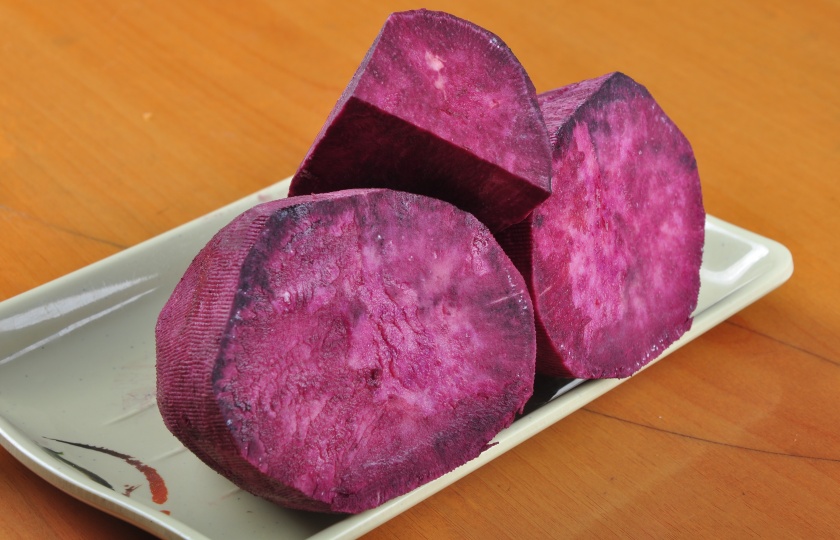
Do Purple Potatoes Take Longer to Boil Than Regular Potatoes?
Purple potatoes take about the same time to boil as regular potatoes, typically 10 to 20 minutes. If cut into larger chunks, they might need a bit more time, but the difference is minimal. The best way to check is to boil until a fork can easily pierce through.
Why is my purple potato bitter?
Purple potatoes can sometimes taste bitter due to several reasons:
Potato Variety: Some purple potato varieties naturally have a slight bitterness, often caused by higher levels of certain sugar compounds.
Storage Conditions: Improper storage, such as high humidity, fluctuating temperatures, or prolonged storage, can lead to bitterness.
Overcooking or Improper Handling: Overboiling or leaving the potatoes unpeeled or uncleaned for too long can make the bitterness more pronounced.
Growing Conditions: Uneven soil quality, insufficient sunlight, or inconsistent fertilization can cause the potatoes to absorb more bitter compounds.























